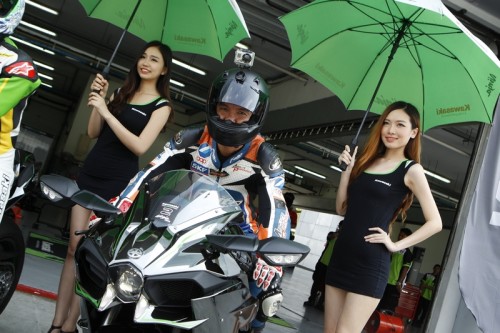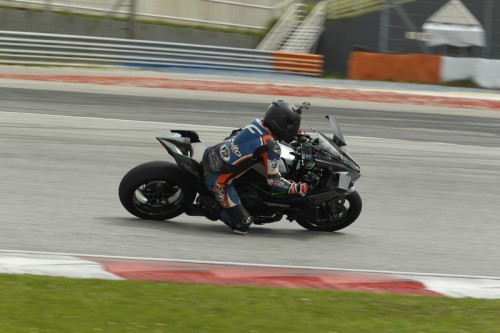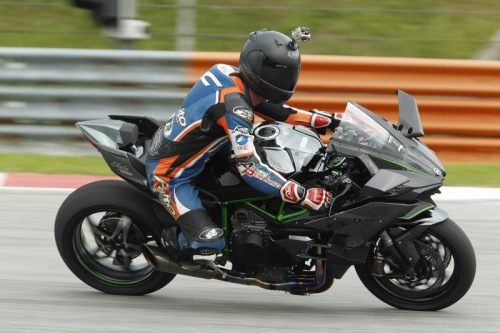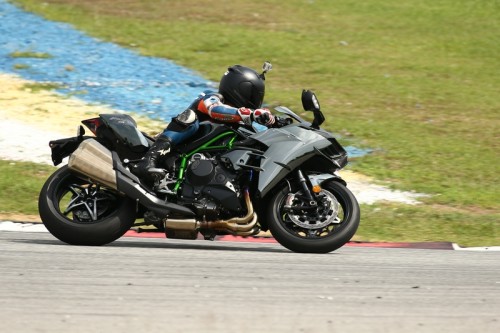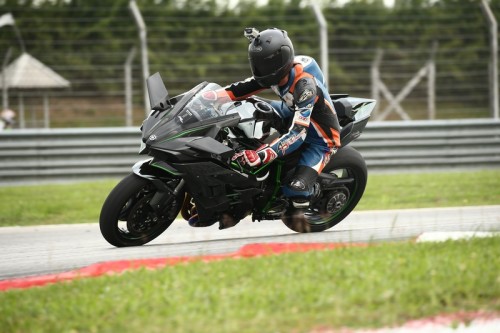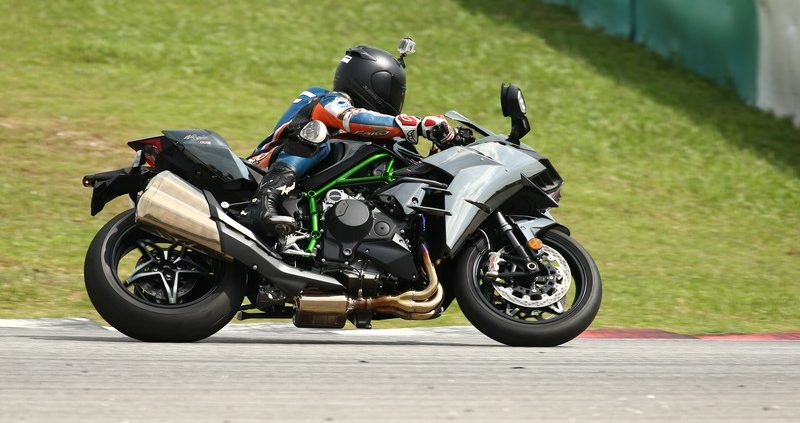KAWASAKI H2 TEST RIDE 2015
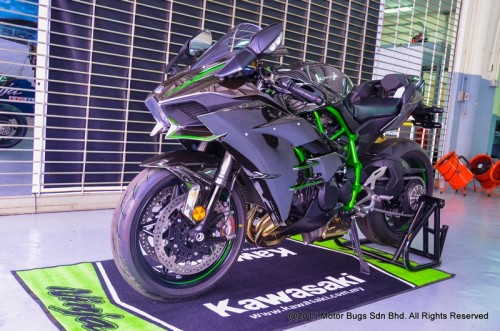

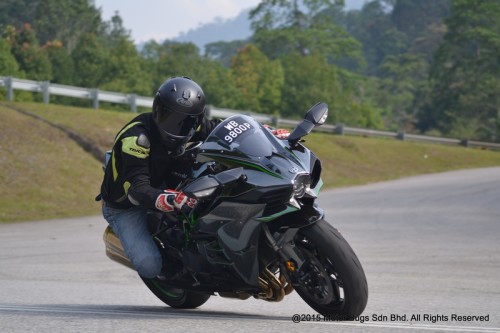
How does one feel getting onto 200 steroid fed horses in-between their legs? Well, a week before I laid my hands on an exclusive Kawasaki H2, thanks to Kawasaki Motor Malaysia (KMSB), I was ecstatic, nervous, pinching myself to see if I am dreaming, all of those and more I would say.
HISTORY.
The first H2 was actually developed in 1971. Back then, it was a 750cc 2-stroke in-line triple road bike. It was a legend then. The 750SS Mach IV, as it was known in Japan, was the fastest bike in the world.
Resurrecting the legendary H2, the new Ninja H2 is a force to be reckoned with. Its revival took the motorcycling world by storm with eager anticipation from both the media and the whole motorcycling fraternity.
BODY
Kawasaki claims that the shape of every piece of the H2 bodywork has a purpose, each formed with function. The stunning design was sculpted for performance, providing excellent high speed downforce. Its aerodynamic mirror stays were designed by Kawasaki Aerospace while the “River Mark”, a symbol of Kawasaki Heavy Industries group (KHI) is proudly displayed on the upper cowl of the Ninja H2.
I personally love the solo seat cowl with hip support pads that hug my rear snugly yet comfortable enough for fast directional changes in the twisties. However I find that the front screen design is not very effective for wind deflection. When I was fully crouched at high speed with my helmet kissing the tank I can still feel the wind hitting hard on the top of my helmet.
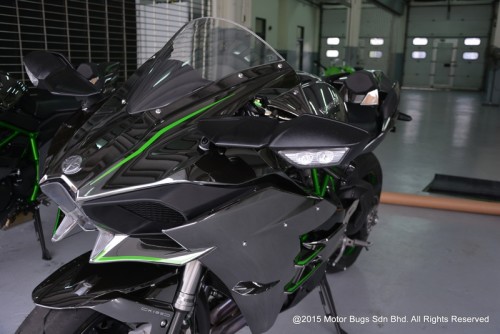
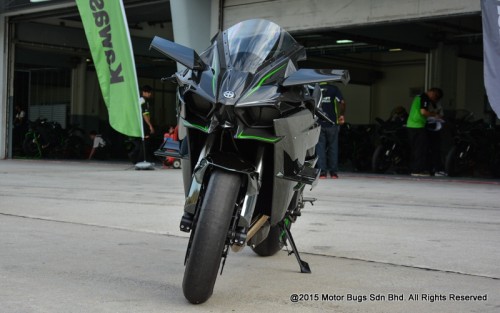
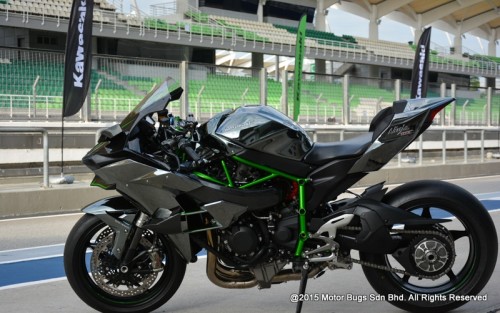
ENGINE
The new Ninja H2 power plant comes in the form of a liquid-cooled, in-line, 1000cc, DOHC, 16 valves added with an intake from Kawasaki 12 blade impeller supercharger. The supercharger is designed by the KHI group through their vast technological experience gained from the gas turbine and green gas engine power plant. The engine is surprisingly smooth at low speed but can be more refined at higher speeds. Engine heat dissipation is excellent. In high traffic areas, I did not feel any discomfort from the heat generated by the engine as compared to some full fairing or even naked models. Torque is fantastic for an in-line, comparable to a V configuration engine but without the jerkiness.
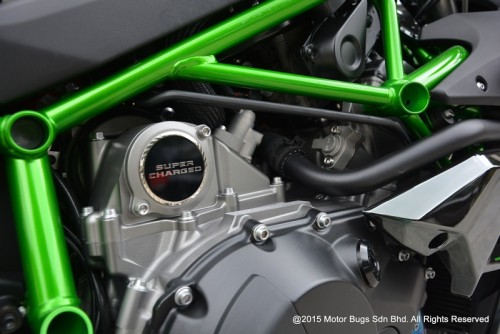
TRANSMISSION.
The H2 comes with a quick shifter, made possible through a dog-ring type transmission which makes shifting lighter and quicker to facilitate quick acceleration. This type of transmission is commonly found in MotoGP or F1.
EXHAUST
The humongous exhaust does look out of proportion but I guess it was designed to comply with the strict sound and smoke emission of certain countries. The cool twin exhaust outlets look like the supercharger impeller or jet engine turbines. I was told during a night fast ride on the highway that the extractor glowed amber. Unfortunately there was no photo taken.
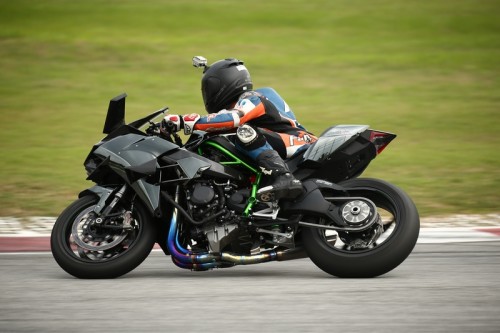
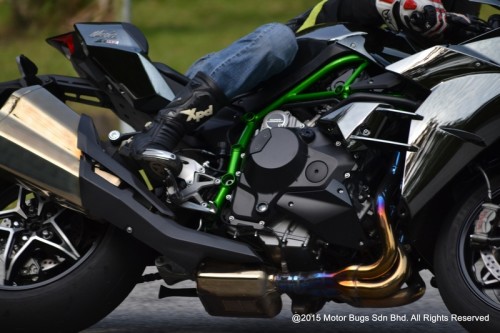
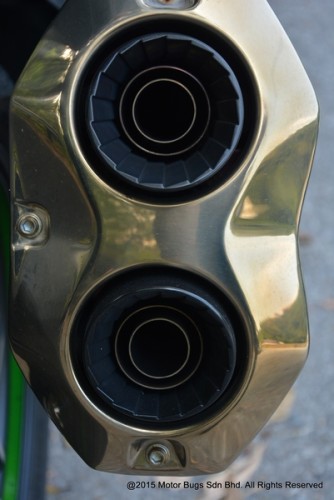
FRAME
The Ninja H2 comes with a new high tensile steel Trellis frame. A bit rigid when taking tight corners but has the flexibility to absorb shocks at high speed. For a motorcycle this powerful, I guess the engineer needed to balance between high rigidity for acceleration and braking and flexibility to take corners, with the latter taking the sacrifice. The frame can definitely be further improved on.
SUSPENSIONS
The front and rear fully adjustable racing suspensions of the H2 is by KYB. This KYB AOS-ll suspensions is the same as the one fitted on the H2R. The standard factory settings are good enough for me on both track and street riding – neither too hard nor soft.
BRAKES
Stopping this 200 horsepower H2 is a pair of radial-mount Brembo cast aluminium monobloc, opposed 4 pistons callipers gripping on a pair of 330mm semi-floating discs on the front and a single 250 mm disc with opposed 2-piston calliper on the rear. Braking power is sufficient in high speed although I find that it can be further improved if compared to its competitor with similar braking system.

FUEL TANK
The 17-litre fuel tank has the same capacity as the ZX-10R but I found it obstructive when I was taking turns on the track during testing in Sepang International circuit. On the street the H2 is doing an average of 9.4 kilometre per litre. Not fuel-efficient for long highway cruising with limited petrol pumps and with no fuel gauge on the H2, you really need to plan your journey and route. The instrument panel however will flash a “Fuel Low” sign when you are running low on fuel.
ELECTRONICS
The Ninja H2 is equipped with multiple electronic controls that would put many modern cars to shame. With a few pushes of the buttons you get to control the Traction Control (KTRC), Kawasaki Intelligent anti-lock brake system (KIBS), Kawasaki Launch Control Mode (KLCM), Kawasaki Engine Brake Control (KEBC), Rain mode, brightness of the shifting lamp, Rev control limiter, Ohlins electronic steering damper which adjusts electronically according to the bike’s speed, acceleration or deceleration and clock. The backlit RPM numbers lighting up in tandem with the Tachometer needle is indeed impressive.
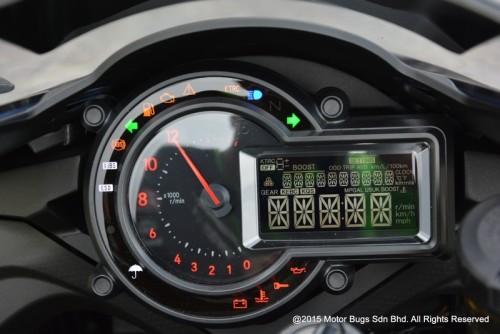
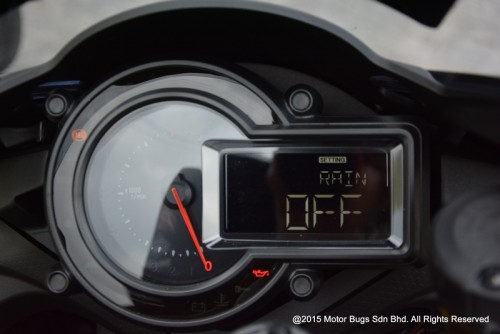
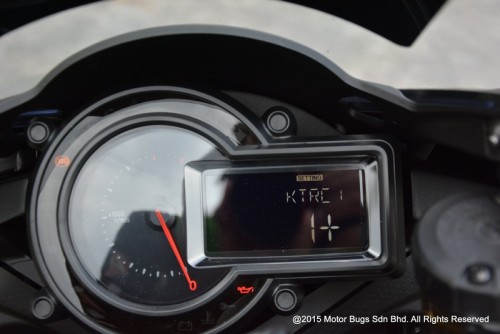
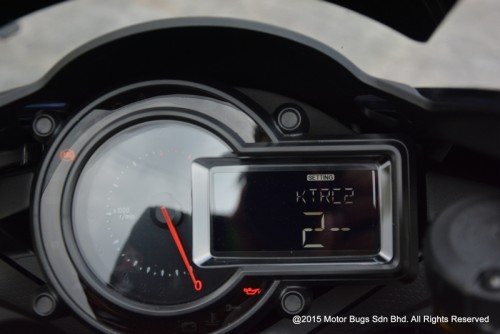
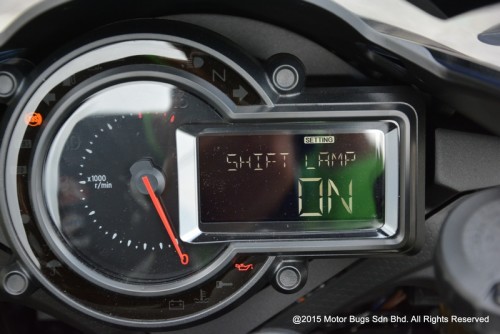
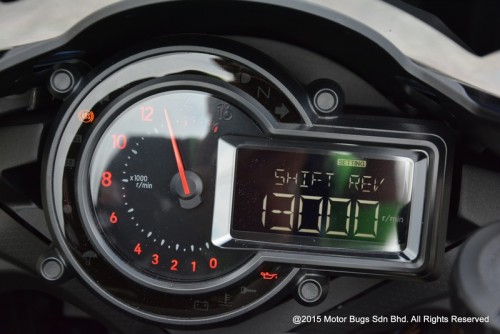
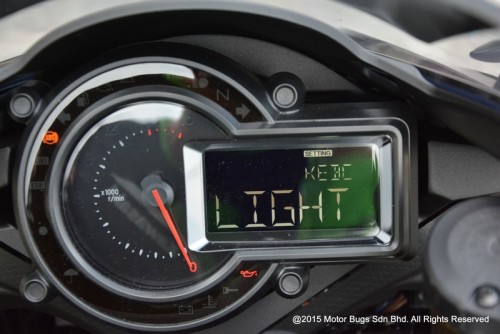
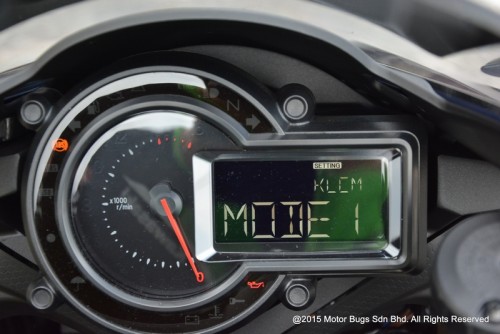
FRONT LIGHT.
The front halogen lamp is a bit of a disappointment when riding on pitch-dark roads with no street lights. The range is roughly 10 meters or less and you need to ride slow and cautiously. It is fine for a short distance but for longer distances, it really takes the fun out of riding a super-fast bike.
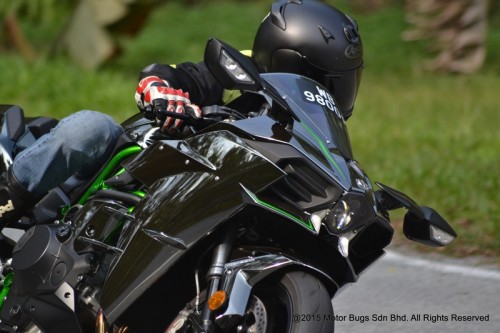
Overall, the new Kawasaki Ninja H2 is a bike that not only can be ridden as a track bike but also both as a cruiser and street bike. Most importantly it is a motorcycle that says “Don’t mess with me”!
Specifications:
– Engine Type: Liquid-cooled, in-Line Four Stroke.
– Displacement: 998 CM³
– Valve System: DOHC, 16 Valves.
– Fuel System: Fuel Injection ⊘50 mm X 4 with dual injection.
– Intake: Kawasaki Supercharger.
– Transmission: 6-speed.
– Final drive: Chain.
– Frame type: Trellis, high tensile steel, with Swing arm mounting plate.
– Tyre: Front: 120/70ZR17M/C (58W).
Rear 200/55ZR17M/C (78W)
– Suspension: Front: ⊘43 mm inverted fork with rebound and compression damping, spring preload
adjustability and top-out springs.
Rear: New Uni-Trak with gas-charged shock, piggyback reservoir. Dual –range (high/low-speed)
compression damping, rebound and preload adjustability and top-out spring.
– Brakes. Front: Dual semi-floating ⊘330 mm discs with Dual calliper radial-mount, opposed 4-piston.
Rear: Single ⊘250 mm disc with opposed 2-piston calliper.
– Overall length: 2, 085 mm
– Overall width: 770 mm
– Overall height: 1,125 mm
– Wheelbase: 1, 455 mm
– Ground Clearance: 130 mm
– Seat height: 825 mm
– Curb Mass: 238 Kg
– Fuel Capacity: 17 Litres.
– Max Power: 147.2 kw (200 PS) / 10,000 min¯¹ (S.E Asia/THA)
– Max Power with Ram Air: 154.5 kw (210 PS) / 10,000 min¯¹
– Max Torque: 140.4 N-m (14.3 kgf-m) / 10,000 min¯¹
